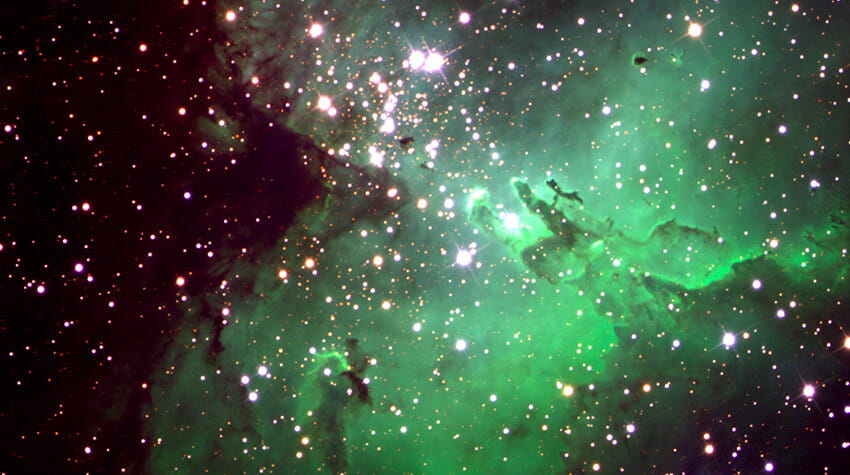Image: The Eagle Nebula (M16) in false colour taken with MINERVA T1 (Daniel Johns).
The MINERVA-Australis telescope array is located at UniSQ’s Mount Kent Observatory, a thirty minute drive outside of Toowoomba. It is a key facility in supporting NASA’s Transiting Exoplanet Survey Satellite (TESS), which is using transit photometry to detect Earth-like planets near our Solar system.
MINERVA-Australis was built in 2018 and funded by the Australian Research Council via a LIEF grant and from contributions from multiple collaborating institutions, namely the University of New South Wales, Nanjing University, UC Riverside, George Mason University, Massachusetts Institute of Technology, University of Louisville, University of Texas at Austin and the University of Florida.
MINERVA-Australis consists of an array of Planewave CDK700 0.7m telescopes connected by optical fibre to a stabilised, R = 75,000 echelle spectrograph, covering the wavelengths 480–630 nm, designed by KiwiStar Optics. Each telescope sits in its own automated clamshell Astrohaven dome, distributed in an approximate semi-circle around the main observatory building.
Due to the wavelength range of the spectrograph and the very low scattered light, the simultaneous calibration source is supplied by a Tungsten slit-flat lamp backlighting an iodine cell. This is a different approach to the typical ‘iodine cell’ method that passes the starlight through an iodine cell.
The spectrograph has 29 orders imaged on a 2k x 2k Spectral Instruments SI850 detector cooled to -90 C with 13.5 micron pixels sampling the spectrum at 3 pixels per resolution element (3 pix/fwhm).
The CDK700 telescopes are also capable of precision photometry on their Nasmyth port. There is also a photometric setup capable of Sloan griz colour photometry using a QHY600M SCMOS detector.
MINERVA-Australis has availability for US-based astronomers to pursue exoplanetary science through the NN-EXPLORE program. More information about applying for time through these programs is available here.
Image: A white light test spectrum projected onto a frosted alignment disk taken during installation (Duncan Wright).





